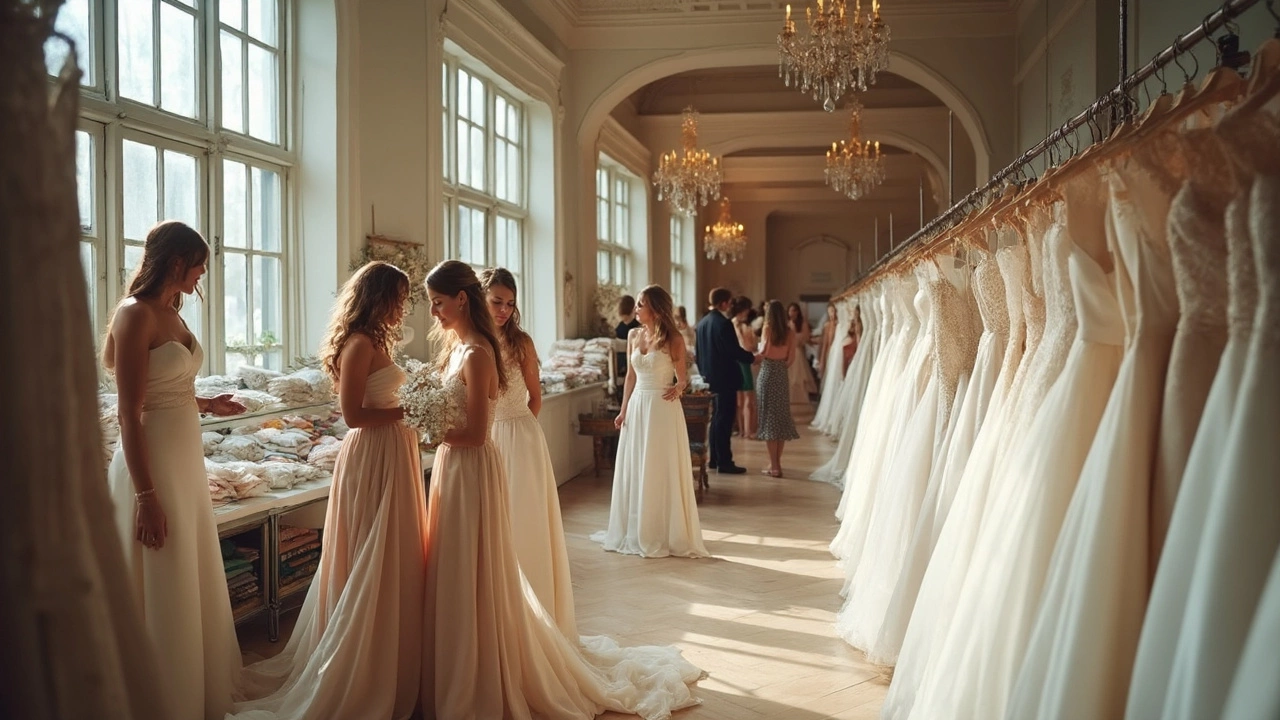Bride's Dress Cost: How Much Should You Pay for Your Wedding Gown?
Buying a wedding dress is a big moment, but it can also be a budget shock if you’re not prepared. In the UK, prices range from a few hundred pounds for a simple off‑the‑rack dress to several thousand for a designer masterpiece. Knowing where the money goes helps you set a realistic budget and avoid surprise expenses later.
What Affects the Price of a Bride's Dress?
First, the designer’s reputation plays a huge role. A name brand or couture label will charge a premium for brand value, exclusive fabrics, and hand‑crafted details. Fabric choice matters too – silk, lace, and organza cost more than polyester blends. The amount of embellishment (beading, sequins, appliqués) adds labor time, which bumps the price up.
Second, the dress style matters. A simple sheath or A‑line with minimal detailing is usually cheaper than a ball‑gown with a full, layered skirt and intricate backwork. Customization is another major factor. If you ask for a unique neckline, custom fit, or special sleeves, the tailor will charge for pattern making and extra fittings.
Lastly, hidden costs often catch couples off guard. Alterations can run from £150 to over £500 depending on the work needed. Veils, shoes, jewelry, and a bridal belt are extra items that quickly add up. Shipping or storage fees may apply if the dress is ordered from overseas.
Smart Ways to Keep Your Dress Budget in Check
Start by setting a clear budget early in your planning. A good rule of thumb is to allocate 10‑15% of your total wedding budget to the dress. This gives you a ceiling and forces you to consider realistic options.
Shop sample sales and trunk shows. Many boutiques discount floor‑samples by 30‑50% because the dress has been tried on before. You’ll still get a high‑quality gown, just at a fraction of the original price. If you’re open to a slightly altered look, try “almost‑new” dresses that have been returned once – they’re often in perfect condition.
Consider renting. Renting a designer dress can save you thousands, and most rental houses offer free alterations. This works well if you’re not set on keeping the gown after the wedding.
Don’t forget to negotiate. Ask the boutique if they can include free alterations or a discount on accessories when you buy the dress. Many retailers are willing to sweeten the deal, especially during off‑season months (January‑March).
Plan your purchase timeline wisely. Order your dress 9‑12 months before the wedding to avoid rush fees and to give ample time for fittings. If you wait until the last minute, you might pay extra for expedited work.
Finally, keep an eye on the total cost, not just the tag price. Add up alterations, veil, shoes, and transportation. Write everything down in a spreadsheet to see the real number before you sign any contract.
By understanding what drives bridal dress prices and using these budgeting tricks, you can find a gown that looks stunning without breaking the bank. Your dress should make you feel beautiful, and your wallet should feel relieved.

- Jun, 15 2025
- Comments 0